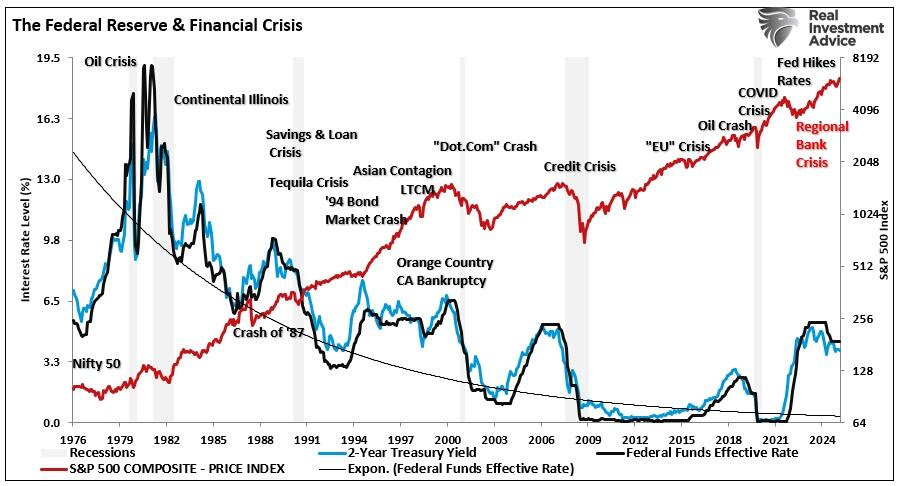Every major Fed rate-hike cycle has historically sparked financial or economic crises—this time may be no different.
Sectors & Industries
Table of Contents
For nearly three years, experts have warned that a recession was right around the corner. The signs all pointed that way — rapid rate hikes, an inverted yield curve (when short-term interest rates rise above long-term ones, a classic signal that investors expect slower growth ahead), weak manufacturing, and high inflation. Normally, that mix ends in a downturn.
Yet here we are, late 2025, with the economy still growing and unemployment still low. The question isn’t whether those warnings were wrong — it’s why the crash hasn’t come yet and what happens when the temporary supports fade.
The U.S. has avoided recession so far because it’s been running on policy spending and AI investment, not broad-based strength.
If a recession hasn’t hit yet, it might just be delayed rather than avoided. The economy could shift from fast growth to slow, uneven stagnation — still growing, but not enough to feel it.
The problem: when the next slowdown comes, AI could speed up job losses.

**** This chart above — The Federal Reserve & Financial Crisis — visualizes nearly 50 years of monetary tightening and the market shocks that followed. It highlights a consistent pattern: every major Fed rate-hike cycle eventually triggers a financial or economic crisis.****
This isn’t a “panic” moment — it’s a time to be smart and selective.
Join LevelFields now to be the first to know about events that affect stock prices and uncover unique investment opportunities. Choose from events, view price reactions, and set event alerts with our AI-powered platform. Don't miss out on daily opportunities from 6,300 companies monitored 24/7. Act on facts, not opinions, and let LevelFields help you become a better trader.

AI scans for events proven to impact stock prices, so you don't have to.
LEARN MORE